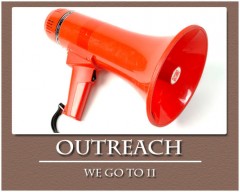 By Alicia Lawrence
By Alicia Lawrence
A large part of public relations is outreach, but let’s face it, outreach usually takes the back burner because emails can be mass distributed to thousands of contacts in a single click.
While that used to work for pitching news releases, the web now provides journalists and bloggers with a never ending supply of stories to write about.
So why should they look at your email? Their inboxes are inundated with hundreds of other PR pitches that came in the same day.
Six Tips to Increase Your Outreach Response Rate
Make it Personal
Besides including the journalist’s name and publication they write for, there are a few key ways to make an email personal.
Twitter is the ultimate introduction platform. You can tweet to a complete stranger and it is perfectly normal. So why not break the ice with that journalist on Twitter? Reply, retweet, or favorite a few of their tweets to start the connection.
Once you establish yourself, the journalist will be more apt to respond to an email, as they recognize your name. Make sure to confirm that connection in the email.
Twitter isn’t the only platform you can create a connection on; you can also comment on one of their articles.
Rule of thumb: Make it about them.
Track and Test
Before distributing emails, set up Tout or Ducksboard to help you track your connections and results. Tout will let you know how many of your emails were opened, if the link in the email was clicked, and if they responded. It also provides a live feed so you can know the minute the person opens your email.
Ducksboard is great if you have a team of people outreaching, and need to coordinate activity. It will track each person’s response rate and how many emails they sent.
The Perfect Timing
After spending hours working on a media list and emails, you don’t want a silly thing like timing to get in the way of a good pitch. Typically, the best time to send emails is between 6 to 10 in the morning.
If you’ve already established a connection with the journalist, ask them their preference regarding what time is most convenient for them.
The Goldilocks Rule of Subject Lines
Subject lines are the most critical part of an email. It can’t be too generic, or too long and detailed – it has to be just right.
When pitching bloggers, I like to be casual and include their name. I try to make the subject line interesting and engaging. Most times my goal when emailing bloggers is to get them to embed or link to a video or web graphic.
Here’s an example: Hi Sally, I would love to hear your thoughts on the this graphic I created.
On the other hand, your subject line is going to be much different if you’re emailing a journalist. If you are pitching a local journalist, be sure to include the city from your news release, important dates, and significance.
Here’s an example: Lynchburg’s First Charity Film Competition Launches Feb. 28
Follow-Up
In my personal outreaching, I’ve found 35 percent of people who didn’t respond the first time will respond if you send a second email.
I send follow-up emails about a week later. They tend to be generic (typically just the name changes), and very short.
A Different Kind of Call-to-Action
Calls-to-action are overlooked when it comes to news releases, but they still play a critical part to increase your response rate. Instead of stuffing your email to the brim with details, make it brief, including an overview and the key questions (5W1H). You can include the full news release as an attachment.
After your first email and the follow up, if they still haven’t contacted you, pick up the phone and call them. This kind of call-to-action will make sure your email was received, remind the journalist of your pitch, and give them the opportunity to ask any questions.
Outreach is the bread and butter of many successful PR campaigns, so do everything you can to increase the response rates of your pitching efforts.
Do you have any tips to add?